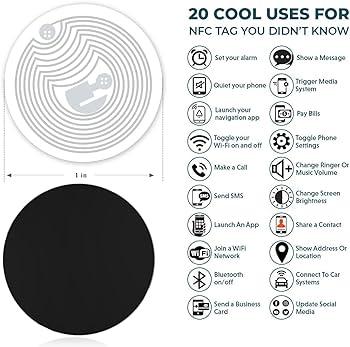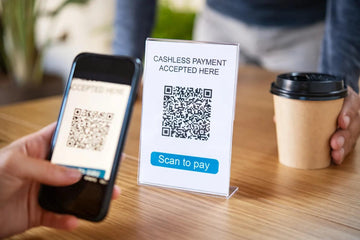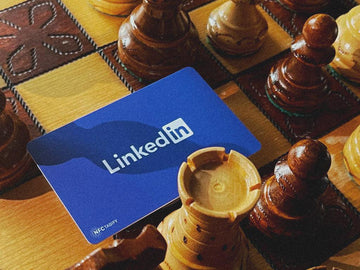What is NFC Tag, and How Does It Work?


What is an NFC tag?
NFC is a technology that lets two devices connect wirelessly and securely. When applied on a smartphone or tablet, NFC technology lets you exchange information between two devices just by getting close. With this ability, it allows users to pay quickly and safely with their cell phones and as a way to display publication materials. NFC tags are RFID transponders that work at 13.56 MHz. They are tiny chips with an antenna attached to them. The chip has a unique ID and a memory that can be overwritten. The chip can interact with an NFC reader/scanner, like an NFC smartphone, through the antenna. An NFC Chip has a memory that can be used to store information. This information is easy to read and use for an NFC device, like a smartphone or tablet. You just need to tap your device on the tag. While RFIDs are wireless barcodes, NFCs are wireless smartcards. NFCs have been making changes in various industries since 2006. Nokia even launched the first NFC-enabled phone during this time, but the world only caught up with this technology in the late 2010s and early 2020s.How do NFC tags work?
NFC tags communicate over radio waves. The two devices, the NFC reader and NFC tag, relay information in an NFC data exchange format. What happens is that the NFC tag transmits radio waves to trigger and activate the antenna in the receiving device. Once the recipient device completes the validation, an exchange of information occurs. These devices are not run by a battery but instead draw power from devices like smartphones. Just like Bluetooth, NFC readers connect to one NFC tag at a time. Card details can be stored on Smartphones, and the NFC tag will act like a transactional card. You can call them smart tags, info tags, or, in this case, NFC tags, but their basic structure is the same as that of RFID tags. They both have a small amount of storage space and a radio chip with an antenna.
How do NFC tags differ?
The most common type of NFC tag is the sticker that has a circuit and antenna. However, there are NFT tags that can be used in a card, wristband, key ring, and other gadgets. NFC tags vary in size and format. Depending on the type of chip, NFC tags have different memory capacities, but most of them have less than 1 kilobyte. This may seem like a problem, but thanks to the NFC Forum's NDEF standard, which is a data format for the NFC, you can do amazing things with just a few bytes. For example, you can use an NFC tag for marketing. You can program an NFC tag, so it leads the user to the brand's web page. When the tag is set up this way, it can be put on any object, brochure, or flyer. They work like a QR Code but can hold more information, which makes them useful for reports and campaign analysis. Also, they can be changed with their own graphics, and at least for Android, they don't need any app to be read. Another thing that makes NFC tag different is its Unique ID (ID). It is located in the first two pages of the NFC tag's memory. The UID is a unique code of the NFC that cannot be changed or deleted. The UID makes the NFC tag unique.Benefits of using NFCs
There are several benefits to using NFC tags. First, it provides an instant connection for data exchange. These connections are wireless, and you don't need an internet connection. The best example of this is hotel keycards that use NFC tags to open doors. In terms of data privacy, NFC tags provide a secure, standardized, and regulated technology. As mentioned earlier, NFC tags have a UID making this technology safe. You might also think that NFC tags are expensive, but this is far from the truth. NFC tags are affordable, and you can access all kinds of information by having one. Consumers also have better transactions with NFC tags. With this technology, people won't have to input necessary details like PIN numbers to make cashless transactions. During the pandemic, NFC tags helped people in making contactless payments in public places. Lastly, NFC tags can help reduce carbon footprint. It is an eco-friendly solution that can minimize the carbon footprint of any business. Recyclable NFC tags, such as ones made of paper, reduce the use of plastic for access cards.









